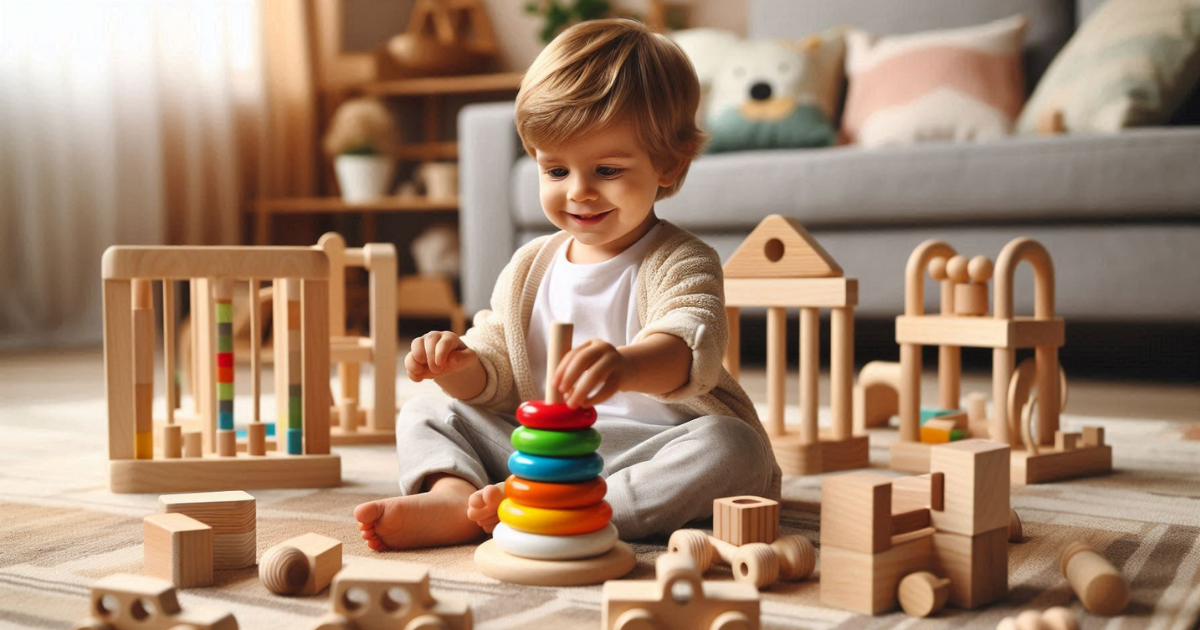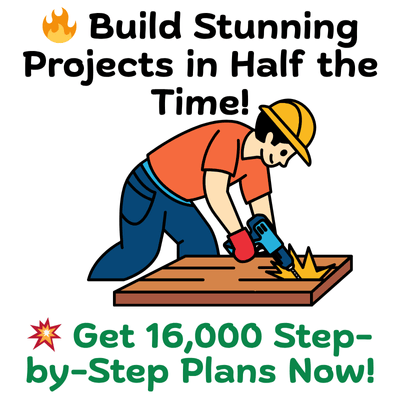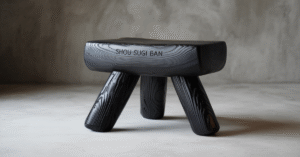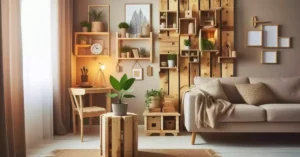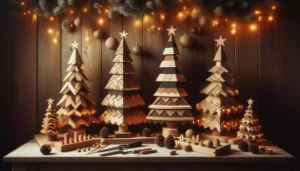Did you know that exposure to natural materials can significantly enhance a child’s cognitive development? Inspire My Play says using natural materials and non-toxic finishes is key for safe wooden toys for kids. As a parent or caregiver, you want toys that are fun, safe, and educational for your toddlers.
Making homemade wooden toys is rewarding. It lets you create toys that match your child’s interests using safe, non-toxic materials. Through toddler-friendly woodworking projects, you can boost your child’s creativity and imagination. Plus, you give them unique, personalized toys.
Key Takeaways
- Using natural materials and non-toxic finishes is crucial for creating safe toys.
- Homemade wooden toys can be tailored to a child’s specific interests.
- Toddler-friendly woodworking projects promote creativity and imagination.
- DIY wooden toys offer a unique and personalized play experience.
- Engaging in woodworking projects can be a fun and rewarding experience for parents and caregivers.
The Benefits of Wooden Toys for Toddler Development
Wooden toys are great for your toddler’s growth. They are good for the planet and offer a special play experience. This experience boosts your child’s thinking, moving, and feeling skills.
Cognitive and Motor Skill Development
Wooden toys help your toddler think better and be more creative. Puzzles and shape sorters make them solve problems. They also improve hand skills and coordination with toys like blocks and pull-along toys.
Sensory Benefits of Natural Materials
Wood’s natural feel and smell are calming and exciting for toddlers. Unlike plastic, wooden toys let your child explore and learn through touch.

Durability and Sustainability Advantages
Wooden toys last a long time, even with tough play. They can be kept for younger kids or even become family treasures. Plus, they’re made from green materials, which is good for our planet.
| Benefits | Description |
|---|---|
| Cognitive Development | Enhances problem-solving skills and creativity |
| Motor Skill Development | Improves fine motor skills and hand-eye coordination |
| Sensory Experience | Provides a natural and tactile experience |
| Durability | Withstands rough handling and can be passed down |
Choosing handmade wooden toys gives your toddler a special play time. It also teaches them about caring for the planet and lasting things. Making toys yourself can be fun and create lasting memories with your child.
Essential Safety Guidelines for DIY Wooden Toys for Toddlers

To keep toddlers safe, it’s key to follow safety rules when making DIY wooden toys. Making toys that are fun and safe means thinking about a few important things.
Age-Appropriate Design Considerations
When making wooden toys, think about the child’s age. Toddlers are curious and like to put things in their mouths. So, toys should be safe for their age and stage of development.
- Choose designs that are simple and easy to understand.
- Avoid complex mechanisms that could potentially harm a child.
- Consider the child’s motor skills and cognitive development.
Avoiding Choking Hazards
Choking on small parts is a big risk for toddlers. To avoid this:
- Make sure all toy parts are bigger than the child’s mouth.
- Don’t use small components or detachable parts.
- Use a choke test tube to check part sizes if you’re unsure.
Always supervise toddlers during playtime to quickly intervene if necessary.
Safe Dimensions and Edge Requirements
The size and edges of wooden toys are very important for safety. Make sure:
- Edges are smooth and sanded to prevent splinters.
- Sharp corners are rounded or beveled.
- The toy’s size is right for the child’s age, avoiding too small or too big.
By following these safety tips, you can make safe wooden toys for kids that are fun and good for their growth. Remember, the secret to making non-toxic wooden toys is to use safe materials and design with the child’s safety in mind.
Non-Toxic Materials and Finishes for Children’s Wooden Toys

When making DIY wooden toys for toddlers, safety is key. The materials you choose are as important as the design. Start by picking non-toxic materials for your child’s safety.
Child-Safe Wood Types
Choosing the right wood is crucial. Look for woods that are durable and safe. Here are some good options:
- Maple: A hardwood that is gentle on the skin and resistant to splintering.
- Beech: A dense wood that is less likely to cause splinters.
- Balsa: A softwood that is easy to work with and safe for children.
Natural Finishes and Food-Grade Oils
Finishing your wooden toys with safe substances is vital. Consider these options:
- Beeswax: A natural wax that provides a protective barrier.
- Coconut oil: A food-grade oil that is safe for children and moisturizes the wood.
- Natural plant-based dyes: For coloring, these are free from harmful chemicals.
Materials to Avoid in Toddler Toys
It’s also important to know what to avoid. Stay away from:
- Lead-based paints: Toxic and harmful if ingested.
- Phthalates: Chemicals that can be harmful to a child’s health.
- Formaldehyde: A chemical that can cause irritation and health issues.
By choosing the right materials and finishes, you can make natural wooden toys that are fun and safe. Always check the safety of your materials and finishes.
Basic Tools and Supplies for Making Wooden Toys

Making wooden toys for toddlers is easy with the right tools and materials. You’ll need a few basic woodworking tools and supplies to start.
Essential Woodworking Tools for Beginners
Beginners need basic tools to make wooden toys. You’ll need sandpaper to smooth wood, saws for cutting, and drills for holes. Don’t forget clamps to hold wood while gluing.
Optional Tools to Enhance Your Projects
As you get better, you might want more tools. Consider wood carving tools for detailed designs, a jigsaw for curves, or a drill press for precise holes.
Where to Source Quality Materials
Look for quality materials at local stores or online. Choose non-toxic and child-safe materials. You can also use wood from old furniture or crates.
Simple DIY Wooden Toys for Toddlers: 5 Beginner-Friendly Projects

Doing DIY projects with toddlers is fun and teaches them new things. Making DIY wooden toys for toddlers is a great way to help them learn and grow. Plus, these toys are safe and last a long time.
Wooden Stacking Blocks
Wooden stacking blocks are a timeless favorite. They help toddlers improve their motor skills and hand-eye coordination. You’ll need wooden blocks of different sizes to make them.
Materials and Cutting Instructions
First, cut the wood into blocks of various sizes. Use a simple saw for this. Make sure the blocks are smooth and have no sharp edges.
Sanding and Finishing Steps
After cutting, sand the blocks well to remove splinters. Then, apply a non-toxic finish to protect the wood. This makes the blocks safe for your child to play with.
Simple Pull-Along Animal Toy
A simple pull-along animal toy is lots of fun for toddlers. It encourages imaginative play and helps improve their fine motor skills.
Assembly Instructions
To make the toy, cut out an animal shape from wood. Then, attach the legs and details using non-toxic glue and nails.
Adding Wheels and Pull String
Put wheels on the bottom for easy pulling. Add a strong string or rope to the front. Make sure it’s securely attached so it won’t come loose.
Basic Wooden Rattle
Making a basic wooden rattle is a fun and easy project. It helps with a toddler’s auditory development.
Creating Safe Sound Elements
To make the sound, fill a wooden tube with safe objects like beads or pebbles. Make sure the tube is sealed well to avoid choking hazards.
Secure Assembly Techniques
Assemble the rattle by sealing the ends with wooden caps. Sand the whole rattle to a smooth finish.
These simple projects let you make many homemade wooden toys that are both fun and educational. These toddler toy making ideas are not only creative but also make toys that can be kept for years.
Intermediate DIY Wooden Toys for Curious Toddlers

Intermediate DIY wooden toys are perfect for curious toddlers. They help improve their thinking and motor skills. These projects are more challenging, keeping your toddler engaged and stimulated.
Shape Sorter Box
A shape sorter box is great for problem-solving skills. It has a box with different holes and blocks that fit into them.
Cutting and Creating the Box
First, cut a wooden box to the right size. Make sure it’s sturdy and smooth.
- Cut the wood according to your design.
- Sand the edges to avoid splinters.
- Assemble the box using non-toxic glue.
Making the Shapes
Make shapes that fit into the holes. Use a jigsaw for curves and a table saw for straight cuts.
- Design the shapes to fit snugly into the holes.
- Cut out the shapes using appropriate tools.
- Sand the shapes to smooth out any rough edges.
Wooden Puzzle with Large Pieces
A wooden puzzle is a great challenge for your toddler’s thinking. It has large, easy-to-grasp pieces that fit into a frame.
Design and Template Creation
Begin by designing the puzzle on paper or using software. Create a template for the puzzle pieces.
Use a laser cutter or jigsaw to cut out the puzzle pieces according to your template.
Cutting and Finishing Techniques
Make sure the edges are smooth and the pieces are safe for your toddler.
- Sand the puzzle pieces thoroughly.
- Apply a non-toxic finish to protect the wood.

Stacking Rainbow Arch
A stacking rainbow arch is a colorful and educational toy. It helps develop fine motor skills. It has curved wooden pieces of different sizes and colors.
Cutting Curved Pieces
To make the curved pieces, use a jigsaw or a bandsaw. Sand the edges to remove any splinters.
Safe Coloring Methods
Use non-toxic paints or stains to color the pieces. Make sure the colors are vibrant and appealing to your toddler.
By following these intermediate DIY wooden toy projects, you can create engaging and educational toys for your curious toddler.
Advanced Wooden Toy Projects That Grow with Your Child

Advanced DIY wooden toy projects offer a lasting play solution for your child. They are made to adapt, changing as your child develops. By making these toys, you ensure they stay fun and challenging as your child grows.
Convertible Rocking Toy
A convertible rocking toy is a great advanced project. It changes from a rocking toy to a standing activity center as your child grows.
Building the Base Structure
First, build a strong base that can hold the toy and your child. Use quality wood and make sure the joints are tight.
Safety Features and Conversions
It’s important to add safety features to the toy. Include soft edges and secure fasteners. The conversion should be easy, so you can change the toy as needed.
Modular Building Set
A modular building set is another advanced project. It lets you create different structures with interlocking pieces.
Creating Interlocking Pieces
For a good modular set, make pieces that are both fun and easy to connect. Use different woods and shapes to keep it interesting.
Finishing for Durability
To make the set last, apply a durable finish. Use a food-grade oil or natural wax to protect the wood.
Balance Board with Multiple Uses
A balance board is a versatile toy that grows with your child. It starts as a simple beam and becomes more complex.
Safe Curve Construction
When making a balance board, focus on safe curves. Use a template for smooth curves and sand the edges to avoid splinters.
Adding Non-Slip Features
For safety, add non-slip features to the board. You can attach a non-slip mat or apply a textured finish.
By doing these advanced projects, you create toys that will keep your child engaged and challenged. These toys are not only fun but also help with your child’s thinking and motor skills.
Troubleshooting Common Issues When Making Natural Wooden Toys

When making safe wooden toys for kids, you might face problems like rough edges and loose joints. Fixing these issues quickly is key to keeping the toys safe and lasting longer.
Fixing Splintering and Rough Edges
Splintering and rough edges can be dangerous for toddlers. To solve this, use a fine-grit sandpaper to smooth out the edges. Always sand in the direction of the wood grain to prevent more damage.
Dealing with Warping and Wood Movement
Warping happens when wood adjusts to its surroundings. To prevent warping, make sure your wood is properly dried and stored. If warping does happen, try to fix it by applying moisture evenly or using clamps to straighten the wood.
| Issue | Cause | Solution |
|---|---|---|
| Splintering | Rough handling or improper sanding | Sand with fine-grit sandpaper |
| Warping | Moisture imbalance | Apply moisture evenly or clamp |
| Loose Joints | Insufficient glue or improper assembly | Re-glue and clamp |
Repairing Loose Joints and Connections
Loose joints can be fixed by reapplying glue and clamping the pieces together until the glue dries. Ensure that the joints are clean and dry before reapplying glue.
When to Start Over vs. When to Fix
Deciding whether to repair or start over depends on the damage’s extent. If the damage affects the toy’s safety or function, it’s best to start over. Your child’s safety is paramount, so don’t hesitate to begin again if necessary.
🎉 Want to Make More Wooden Toys with Ease? 🧸
Unlock 16,000+ Done-For-You Woodworking Plans and build anything from toddler toys to full-size furniture—no experience needed!
With step-by-step instructions, cutting lists, schematics, and beginner-friendly guidance, it’s like having a master woodworker by your side!
🔨 Why You’ll Love Ted’s Woodworking:
- ✅ Instant access to 16,000 detailed woodworking projects
- ✅ Perfect for beginners & pros alike – no fancy tools required
- ✅ Includes wooden toy plans, furniture, crafts, and more
- ✅ Lifetime access + free monthly new plans
- ✅ 100% money-back guarantee
👉 Click Here to Start Building with Ted’s Woodworking – Only $67 One-Time!
Make DIY fun, simple, and successful – even if you’ve never picked up a saw before!
Conclusion: Creating Lasting Memories Through Handmade Wooden Toys
When you make handmade wooden toys for your toddlers, you’re doing more than just creating playthings. You’re building a legacy of memories that will last forever. Working on toddler-friendly woodworking projects and making diy wooden toys for toddlers can be very rewarding. It helps you connect with your child on a deeper level.
Handmade wooden toys are not only safe and long-lasting but also offer a rich sensory experience and cognitive stimulation. The joy of creating something with your own hands is unmatched. Seeing the happiness on your child’s face when they get their new toy is truly priceless.
As you keep exploring the world of diy wooden toys for toddlers, you’ll find many benefits. Creating something unique and personalized for your child is incredibly rewarding. So, keep crafting. Watch as your handmade wooden toys become a cherished part of your child’s childhood memories.
FAQ
What are the benefits of making DIY wooden toys for toddlers?
Making DIY wooden toys for toddlers boosts their brain and motor skills. It offers a fun and unique play experience. Plus, wooden toys are tough and good for the planet, unlike plastic ones.
What safety guidelines should I follow when making DIY wooden toys for toddlers?
When making toys for toddlers, design them for their age. Make sure they’re not choking hazards. Use safe materials and finishes, like child-safe wood and natural finishes.
What type of wood is safe for making toddler toys?
Safe woods for toddler toys include birch, maple, and beech. Stay away from woods with harmful finishes, like pressure-treated wood.
What are some easy DIY wooden toy projects for beginners?
Beginners can start with wooden blocks, animal toys, and rattles. These projects need simple tools and help you learn woodworking.
How can I ensure that my DIY wooden toys are durable and long-lasting?
For durable toys, use top-notch materials and follow good construction methods. Apply a natural finish and check your toys often for damage.
Can I use homemade wooden toys for other children beside toddlers?
Yes, you can make toys for kids of all ages. As they grow, you can make more complex toys like puzzles and shape sorters.
What are some common issues that can arise when making natural wooden toys, and how can I troubleshoot them?
Issues like splinters and rough edges can happen. Warping and loose joints are also common. Sanding, applying a natural finish, and reinforcing joints can fix these problems.
Are there any specific tools or supplies that I need to get started with making DIY wooden toys?
To start making toys, you’ll need basic tools like a saw, drill, and sandpaper. Optional tools like a router can also help with your projects.
Can I customize DIY wooden toy projects to fit my child’s interests and preferences?
Yes, you can tailor toys to your child’s likes. For example, make a toy animal they love or a shape sorter with their favorite shapes.
